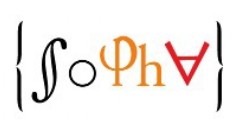My paper contributes to the ontology of events, and a possible application to the topic “action”.
Since the discussions in the 80s and the 90s of the last century, inspired by Quine/Davidson, Kim, Bennett (and others), the interest in the ontology of events seems to have waned in the last 20 years. Questions about the existence and identity of events, combined with the status of events as ontological category, have not completely disappeared, but have been integrated into the discussion of other topics of ontology, e.g. time and temporal relations, three- versus four-dimensionalism, substance- versus trope- or process-ontology.
My paper is a pladoyer against this trend. My primary vehicle is the classical understanding of events as changes, as first presented in analytical debates by Brian Lombard, in his book “Events” (Lombard 1986). I refer to the “Ancient Criterion of Change” (ACC)[1] and want to use it to present a differentiating theory of events, within the scope of which we can distinguish between qualitative change, local movement, and “substantial change”, i.e. becoming/decaying.
The ACC also makes it possible to understand the difference between events as entities and mere Cambridge changes[2], including relational changes, on the one hand, and between (temporally extended) natural events, and (instantaneous) institutional or conventional (Simons 2003, 377) events, e.g. changes in laws or prices.
Especially the latter distinctions may also be useful to establish some differences in the scope of action. Some actions we perform through “real” events, others perhaps through doing nothing, but only by being related to other occurrences; some actions can be traced back to individual, some others to collective intentions.
Brian Lombard 1986: Events. A Metaphysical Study. London, Boston and Henley: Routledge & Kegan Paul.
Peter Simons 2003: Events. In: M.J. Loux & D. Zimmerman (eds.), The Oxford Handbook of Metaphysics. Oxford: Oxford University Press 2003, 357-385.
[1] An object, x, changes if and only if
(i) there is a property, P,
(ii) there is an object, x,
(iii) there are distinct times, t and t', and
(iv) x has P at t and fails to have P at t' (or vice versa).
Lombard 1986, 80f
[2] A change occurs if and only if
(i) there are distinct times, t and t',
(ii) and there is a proposition, S, and
(iii) S is true at t and false at t'.
Lombard 1986, 81

 PDF version
PDF version
